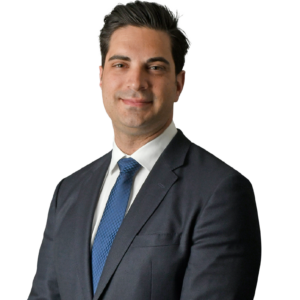The latest headline coming out of the sports medicine world today was that Brock Purdy’s physician was postponing his UCL repair surgery due to inflammation. With this news and as the Northeast begins to prepare for the upcoming baseball and softball seasons, I thought it would be a good time to discuss ulnar collateral ligament injuries. I’ve prepared some of the most commonly asked questions regarding this injury.
What is the ulnar collateral ligament (UCL)?
The UCL is the ligament on the inside of the elbow that stabilizes the elbow during valgus stresses. A valgus stress is a deforming force that displaces part of the limb away from the midline. This force is commonly seen in overhead throwing athletes. This force is highest at the moment the thrower transitions from the reach back position and begins to accelerate the arm forward.
Who gets these injuries?
These injuries most commonly occur in overhead athletes such as pitchers. However, it can also occur traumatically with falls on the extended elbow such as in football. Common risk factors for this injury are exceeding pitch count and inning restrictions, higher velocity pitching or recent increase in velocity, core weakness, and loss of shoulder range of motion.
Who needs surgery?
Typically the only patients that require surgery for this injury are overhead athletes who will be continuing their careers throwing. Traumatic injuries in non-overhead athletes typically do not require surgery and will recover with rest and physical therapy. Patients who seek to continue their careers as an overhead athlete and/or aspire to compete at the next level, will require a competent UCL thus requiring surgical intervention.
What is the difference between a repair and a reconstruction?
A UCL repair involves sewing down the patient’s own or native UCL ligament back down to its insertion site. This can only be done with a certain type of UCL injury. UCL tears that involve avulsion type tears from the proximal or distal insertion sites can be repaired. Also, high grade partial ligament tears are amenable to repair. A repair is performed commonly in conjunction with an Internal Brace. An internal brace is collagen coated tape-like suture that is placed over the native ligament to encourage a natural healing response as well as protect the ligament as it heals. Typical timeline for recovery can be as soon as 6-8 months.
A UCL reconstruction is taking a tendon from other parts of the body such as the palmaris longus in the forearm or the gracilis hamstring tendon in the knee and using that tendon to make a new UCL. This surgery is more popularly known as Tommy John surgery. Candidates for this surgery are overhead athletes where the ligament is torn in the middle or the overall quality of the native UCL tissue is poor. Recovery for this surgery is longer. Typical return to play following UCL reconstruction is 12-14 months.
Thanks for reading! If you have any questions or concerns, please contact Total Orthopedics and Sports Medicine!







 Website Design by
Website Design by